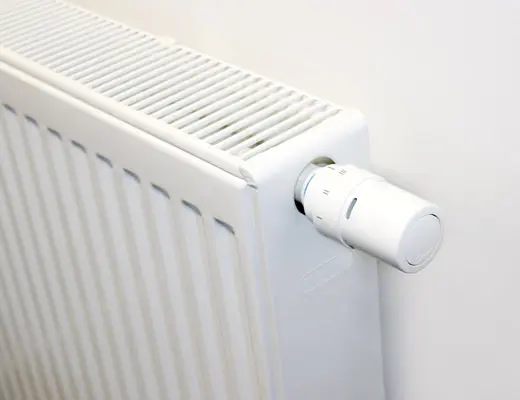
TRV controller on Radiator
Radiators heat up and cool down quickly. They also have their own thermostat on each radiator that regulates the radiator according to the air temperature of that particular room to stop overheating (for example: when the sun comes into the room) or to turn off that particular room. This is called a thermostatic radiator valve (TRV) and is a good simple control.
There also needs to be a central controller for selecting times for the whole heating system to come on and go off automatically and to select what general air temperature to heat the house to. This control thermostat is often located in a hallway or neutral area (an area that isn’t easily affected by the drafts or solar gain).
Options are wall-mounted digital program thermostats to Smart Nest Wifi controllers. A system with one programmable thermostat is called a single control zone with slave thermostats on the radiators. This is the most common way to control radiator central heating and gives great control and convenience.
Controllers come with a 5-year warranty.

TRV controller on Radiator
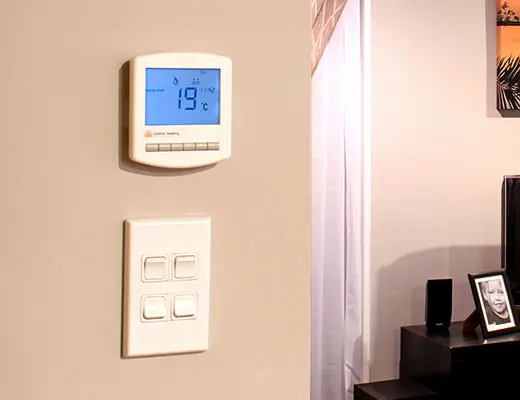
Digital Program Thermostat
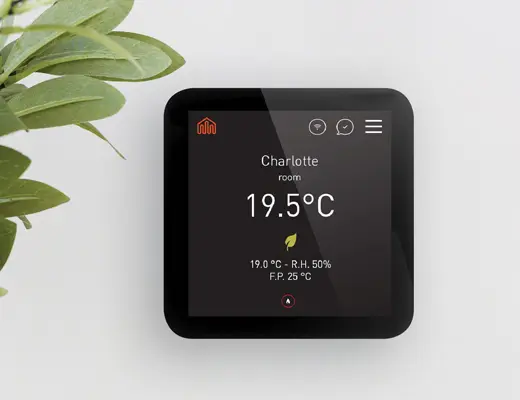
Wifi Smartstat
Typical heating times and temperatures are:
Different programs are usually used for weekend and holiday settings.
Setback is a mode that instead of turning the heating off at a certain time, the heating lowers to a preset temperature. For example, from a comfort temperature of 20°C to a setback temperature of 17°C. This could be useful for infants' bedrooms.
Sometimes a large house may have two or more control zones. Maybe a living zone with a programmable thermostat and a bedroom zone with a programmable thermostat. Each zone programmable thermostat is controlling the overall heating time and temperature for specific multiple rooms. Multiple zone radiator systems are convenient and save energy.
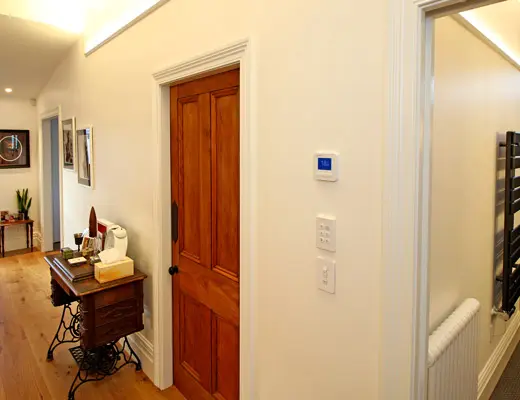
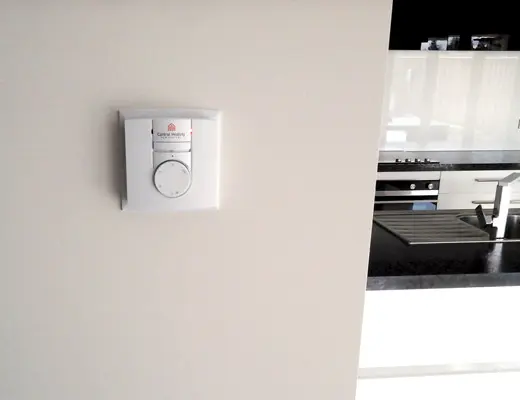
Most underfloor heating systems are in-slab systems where the underfloor pipes are in the floor slab. These are high thermal mass systems that react slowly. This means that pre-programming times to bring the heating on and off are not feasible as the system needs be on low or standby most of the time.
A simple form of in-slab heating control is a single dial or analogue thermostat that is sensing the general air temperature of the house but also has a floor probe that monitors the floor slab temperature. A minimum floor slab temperature setting on the controller enables the floor to be on standby to ensure it can deliver comfort to the house in the colder parts of the day/night. This single underfloor control can also be a digital version and also a Wifi enabled version.
Controllers come with a 5-year warranty.
There are fast-acting underfloor heating systems such as the Variocomp system. These types of system can have controls like the radiator systems. The programmable digital thermostats and the Nest Smart stats are ideal for these types of system
Some people prefer full multizone control for underfloor heating. This is where there is a thermostat for every room in the house. This enables rooms to be at different temperatures to suit the occupants and could be the best solution for a customer. There is a notion that full zone control will be more efficient, but from our experience, it may save a little on running costs but the actual comfort in the home may be compromised. Too much control (too many thermostats) or too much fiddling with controls defeats the purpose of whole-home central heating comfort. A better compromise could be breaking the home into just several zones.
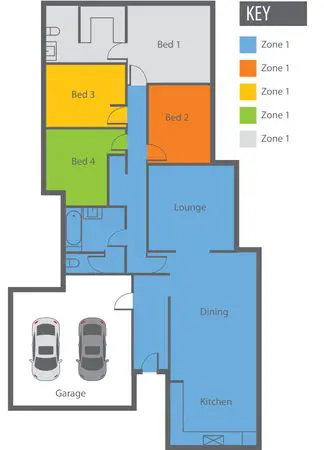
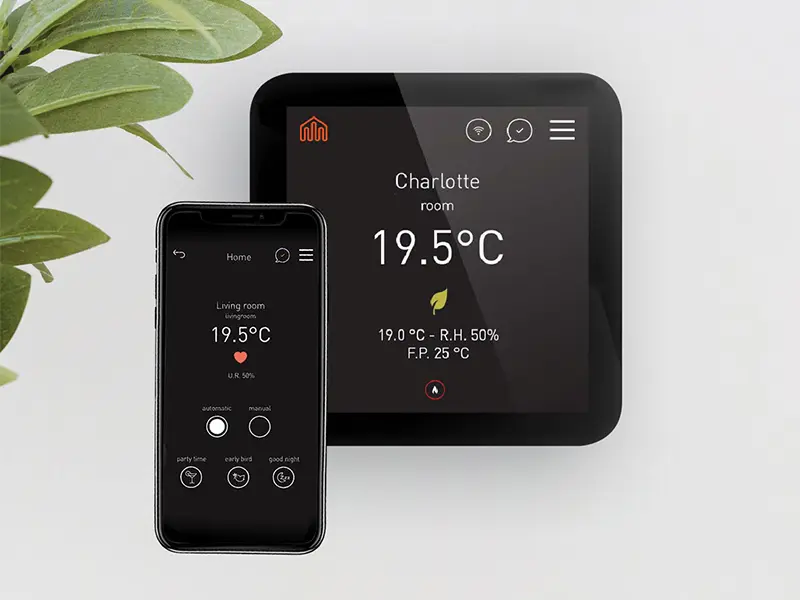
Smart heating controls such as the Smart One Controller or Google Nest 3 allow you to manage your heating remotely from a computer, tablet or smartphone. One clear advantage of a smart heating control system is that you can make changes remotely if your plans change – for example, you can change the time that your heating comes on if it turns out you will be home sooner or later than you thought. Other things such as tracking your energy use and monitoring tenants or holiday home use are available.
Whether a smart controller will save you money, and whether it is right for you, will depend on your lifestyle, how you currently control your heating and whether you prefer using an app to a traditional controller.
Most warm water central heating systems are capable of heating the domestic hot water for the house. The advantage is very large flow rates and capacity for showers and baths. When a hot water cylinder is heated from the central heating system, controls are used to select the heating times and water temperatures for the cylinder. This can be a second zone on the heating controller or a separate controller for the hot water cylinder alone. We can discuss the best option for your system.
